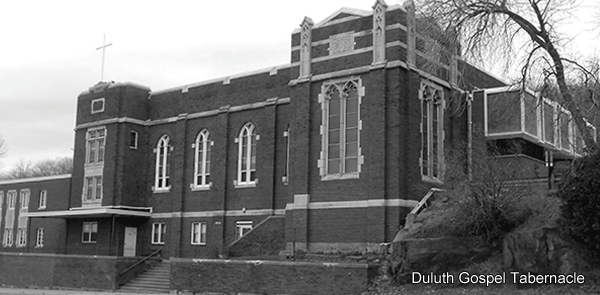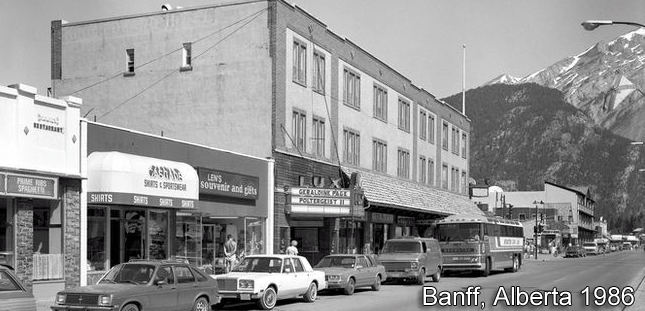Our History
Roots of the movement can be traced at least in part to the Wesleyan-holiness renewal and the “Deeper Life” emphases of the late 1800s. Wesleyans emphasized a definite sanctification experience, and Deeper Life advocates stressed an empowerment of the Spirit for witness and service. In addition, the Fellowship of Christian Assemblies points to other sources that are strongly Baptist, particularly in the area of local-church structure.
In 1906 an outbreak of the Holy Spirit occurred among Scandinavian Baptists in Chicago, Illinois. About that time William H. Durham, also of Baptist heritage, saw gifts of the Spirit in his North Avenue Mission. Durham soon became the leading non-Wesleyan voice in the early movement. His “finished work of Christ” theme claimed that the door to God’s gifts was open to all believers immediately upon professing their faith in Christ. Durham affected future Pentecostal leaders in the U.S, and Canada, including a group of ministers who would eventually form what they called the Scandinavian Independent Assemblies of God.
Among them were Bengt Magnus Johnson, who brought from his Baptist background a vigorous stand on local-church autonomy, A. A. Holmgren, of the same heritage, and Gunnar Wingren, who pioneered the great work in Brazil. Also included was Arthur F. Johnson, whose service would continue into the future Fellowship of Christian Assemblies.
Meanwhile in Canada, Scandinavians were influenced as early as 1908 by Christina Larson, who brought the Pentecostal message from her native Norway to the small town of Weldon, Saskatchewan. In these pioneer days, meetings were held in homes, schools and even barns. Contact with other groups was encouraged, however, through the efforts of Carl O. Nordin of Amisk, Alberta, among others. He even made contact with like-minded leaders across the border in the U.
Arthur F. Johnson became a mentor to Elmer C. Erickson, whose ministry at the Duluth Gospel Tabernacle in northern Minnesota over four decades was a primary course-setting influence in the fellowship. Johnson and Erickson concentrated on English-speaking ministries, while maintaining contact with two ethnic groups, the Scandinavian Independent Assemblies of God and the Scandinavian Assemblies of God. In 1922 in St. Paul, Minnesota, about 25 ministers from these three groups decided to come under a common, informal banner – an unincorporated fellowship known as the Independent Assemblies of God.

A major concern of this new fellowship was local-church autonomy. A strong emphasis on self-governing local churches had marked the early stages of the Pentecostal renewal and the Independent Assemblies of God were determined to retain that stance.
By 1935 the fellowship listed 54 pastors and evangelists and 21 foreign missionaries. Five years later their ranks had grown to 160.
Levi Pethrus, pastor of the noted Filadelfia Church in Stockholm, Sweden, influenced the fellowship through his visits and writings on “assembly life.” E. C. Erickson launched Herald of Faith magazine in 1936. The group’s first national convention was held that year at Brooklyn, New York. For several years annual national conferences alternated between Duluth and Chicago. Regional and area conferences proliferated, providing a glue for the fellowship.
On the Canadian side, Ole Forseth was instrumental in bringing A. W. Rasmussen to conduct meetings at Bethel Pentecostal Church in the Peace River area of Alberta in the early 1940s. Pastor Rasmussen saw the need for a central gathering point to rally the many small groups, and so he moved his family to Edmonton in 1945. Edmonton Gospel Temple was established the next year.
He was soon joined by T. E. Crane, and together they founded Temple Bible College. The Edmonton church hosted conventions twice a year, in the spring and the fall. Eventually as other churches were planted, the conventions moved around the country and settled on a once-a-year schedule.
During the period up to 1950 the fellowship was fairly informal in its pursuit of Pentecostal experience combined with local-church autonomy and evangelism. Turmoil during the so-called “Latter Rain” movement of the late 1940s stimulated a quest for clearer identity and more cohesive practical cooperation. The ministerial listing process was strengthened. A new magazine, Conviction (later renamed Fellowship Today) was launched in 1963. The working process of the fellowship was defined in a brochure in 1959, and a new name, Fellowship of Christian Assemblies, was adopted in 1973.
Ministerial development was enhanced by Bible colleges in or alongside local churches, not only in Edmonton but also Seattle Bible College, founded by Philadelphia Church, Seattle (led by Roy Johnson) and Chicago Bible College (later Christian Life College), launched by Philadelphia Church, Chicago. Leadership in home and foreign missions continued strong across the fellowship.
With the eventual passing of its father figures, the fellowship turned increasingly toward task forces and other collegial means for leadership in projects. National convention planning committees prepared for events at conference centers or local churches. In addition to the general convention, a smaller mid-year Fellowship Concerns Conference, open to all, was conceived, to probe matters of theological and practical concern and to enable discussions at the grass-roots level.

To this day, the fellowship affirms the two strands of local-church autonomy and inter-church responsibility.
Statements of Nature and Mission and Common Beliefs were adopted in a joint U.S.-Canadian conference at Banff, Alberta, in 1986. The mission statement affirms our Pentecostal heritage and views the Great Commission as the overarching purpose for our existence as a group of churches.
In 2000, the U.S. group voted to incorporate itself as “an association of autonomous local churches,” setting up by-laws, empowering an official board, and appointing a national coordinator. Definitions of membership requirements, expectations, relationships and accountability were spelled out. Each member church was asked to support the fellowship with 0.25 percent of its general-fund income.
In 2007, the Canadian group made structural adjustments of its own, establishing five Fellowship Elders to give guidance and counsel to the churches and ministers. A National Committee of pastors is organized along geographical lines to maintain ties in the various regions.
The American and Canadian groups now list nearly the same number of churches–about 100 each. Though the Scandinavian flavor has faded with the passing years, the passion for Spirit-led worship and effective evangelism remains at the core of the FCA.
—Contributed by Henry Jauhiainen, one-time pastor of Duluth Gospel Tabernacle
